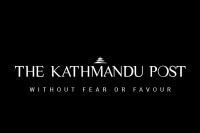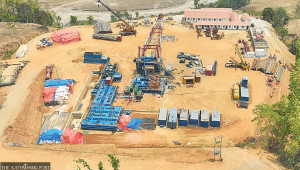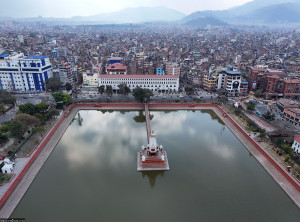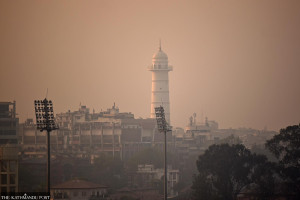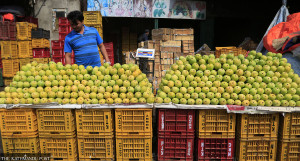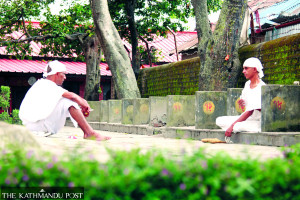National
Poor funding, teacher shortage and misplaced government priority blamed for poor school results
A total of 3,522 community schools run classes for grade 11 and 12 but the government provides salaries for just 6,000 temporary teachers.
Binod Ghimire
That over 50 percent of the students who appeared in grade 12 examinations held in June have failed to qualify to study the higher level has raised many questions over Nepal’s education sector and once again put the spotlight on the utter failure of all concerned to improve the country’s school education system over the years.
As many as 363,008 examinees had appeared in the grade 12 examinations. Of them, only 174,598 students got through the tests to study the bachelor’s level in the results published Friday. A staggering number of students—188,410 or 52 percent—cannot pursue higher studies as they are listed under the non-grader category which means they failed to garner a minimum of 35 percent marks in theory exam and 40 percent marks in practical exam of at least one subject.
The results were published under the letter grading system adopted six years ago.
The letter grading system is the newest effort by the government to “improve” school education with a view to assessing students’ overall knowledge, skill and competence.
The eighth amendment to the Education Act in 2016 integrated grades 11 and 12 in the school education which otherwise was categorised as higher secondary.
A year later, the government adopted letter grading, ending the practice of calculating the results in percentage.
However, that has turned out to be a mere technical change which has failed to bring improvements in the quality of education. The results from Friday and the previous years show the quality of education continues to remain poor, according to educationists.
Three decades have passed since the country went for the Plus Two education system, discarding the previous intermediate level after the tenth class.
And the constitution of Nepal states that education up to the secondary level will be free. Article 31 (2) of the constitution says there shall be compulsory and free education up to the basic level (grade eight) and free education up to the secondary level (grade 12) from the state.
However, the government has not allocated permanent teachers to schools for grade 11 and 12 yet.
“The government hasn’t paid any attention to grades 11 and 12. It doesn't even provide funds for hiring enough teachers,” Basudev Kafle, a professor of education at the Tribhuvan University, told the Post. “The poor results are natural when no one is paying attention to school education.”
Of the around 5,000 schools running classes for 11 and 12 grades, 3,522 are
community schools. However, the government is providing salaries for just 6,000 teachers hired in temporary positions.
“A minimum of five teachers are required for one faculty in each school. The need is higher where the schools offer education in more than one faculty,” Dipak Subedi, chairperson of the Higher Secondary School Teachers Association, told the Post. “However, one school receives the salary from the government for a maximum of two teachers. The schools are compelled to hire teachers from their internal resources. So they hire part timers who aren’t available for after-class consultations.”
A study report by former education secretary Mahashram Sharma, who is the chairperson of the National Examination Board, suggested in 2018 that there was an immediate need for 7,800 additional teachers in the schools running classes for 11 and 12 grades. The report showed an acute shortage of subject teachers mainly to teach English, Mathematics and Science.
Education experts say the government’s focus is on cosmetic things like changing evaluation systems with little attention to improving the quality of education.
“Evaluation systems do need revision but it is a secondary priority. The focus should be on uplifting the quality of education,” said Kafle. “Timely change in curriculum, ensuring availability of qualified teachers and creating a proper teaching-learning environment is a must if we want improvement in results.”
The pass rate for grades 11 and 12 has consistently been hovering below 50 percent for years. The situation is no different in the Secondary Education Examination. Similarly, different reports by the Education Review Office (ERO) under the Education Ministry, show that students from different grades could grasp only 50 percent of the contents in their curriculum.
As per the grade 12 exam results published Friday, 4,171 students secured the grade point average (GPA) between 3.61 and 4. Similarly, 30,107 students got GPA between 3.21 and 3.60. No student secured 4.0 GPA. As many as 65,284 students got between 2.81 and 3.20 GPA, 64,093 secured between 2.41 and 2.80 GPA and those getting between 2.01 and 2.40 GPA number 10,900.
Education experts say the poor performance of the students in the ERO has been reflected in the recent result.
Bidya Nath Koirala, a professor at Tribhuvan University, said the quality of school education cannot improve without having qualified and committed teachers.
“I firmly believe that only teachers can make the difference. The government must hire competent teachers in the vacant positions,” Koirala told the Post. “If the existing teachers are incompetent they must be relieved of their responsibilities to open doors for others. It is already late to act.”




 20.46°C Kathmandu
20.46°C Kathmandu

